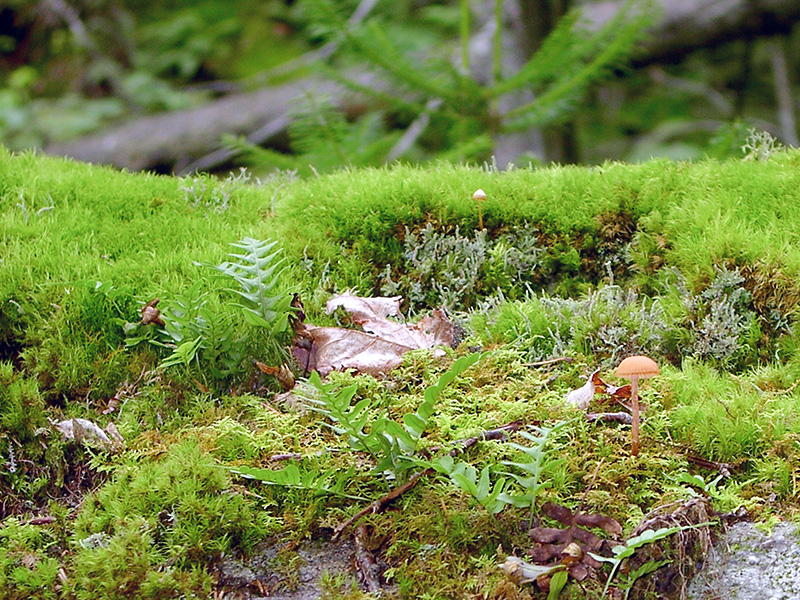
Although we always enjoyed camping on the lakes of the Adirondacks, I’ve always found forests to be more interesting than lakes or even oceans. One of the reasons is the moss and associated plants. It’s like a miniature green world with a diversity of species. I’m glad we’ve been able to establish some mosses in our own yard.
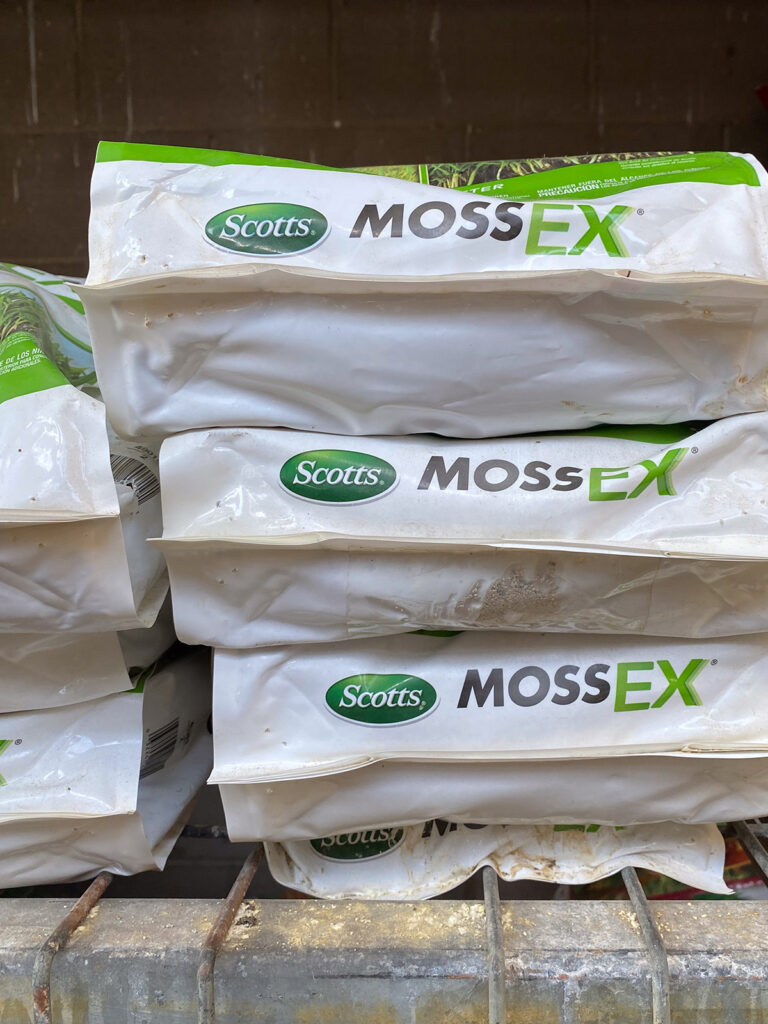
I’m puzzled as to why some people view moss as a problem, sometimes even buying products that promise to kill it! I guess it gets in the way of the all-important turf grass that must cover everything.
Moss isn’t something we’ve ever ordered from a catalog or bought from a store, though we have quite a bit, especially in and around the pond and stream. I can identify almost all of the hundreds of plant species in our yard, but I have to admit I don’t know much about our moss species. I’m assuming they’re native, but who knows? Now that I have the (free!) Seek app, I’m beginning to be able to identify mosses I see.
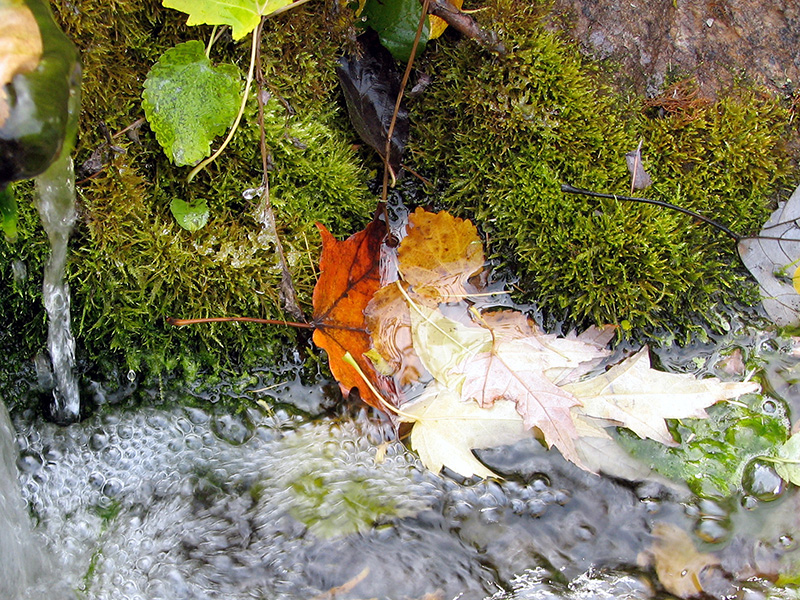
Some of the moss I have to admit I picked up in the middle of a mall parking lot amidst broken glass and weeds.
I don’t collect plants from the wild, but rescuing some moss from this otherwise trashy area seemed pretty innocuous. It has done very well.
Many of the mosses came dried on to the rocks and boulders we bought for the pond. They seemed to magically come alive and thrive in the wet environment. Our mosses (aside from the mosses growing on rocks in our stream) are just bits and pieces here and there as in any yard I suppose, but it thrives in the shade and the moist areas that we created over the years.
Our mosses
Here are some of the mosses we grow in our habitat garden, around CNY, and in North Carolina.
A nesting material
Robins, chickadees, and other birds often use moss for nesting material. We always find moss in the chickadees’ old nests.
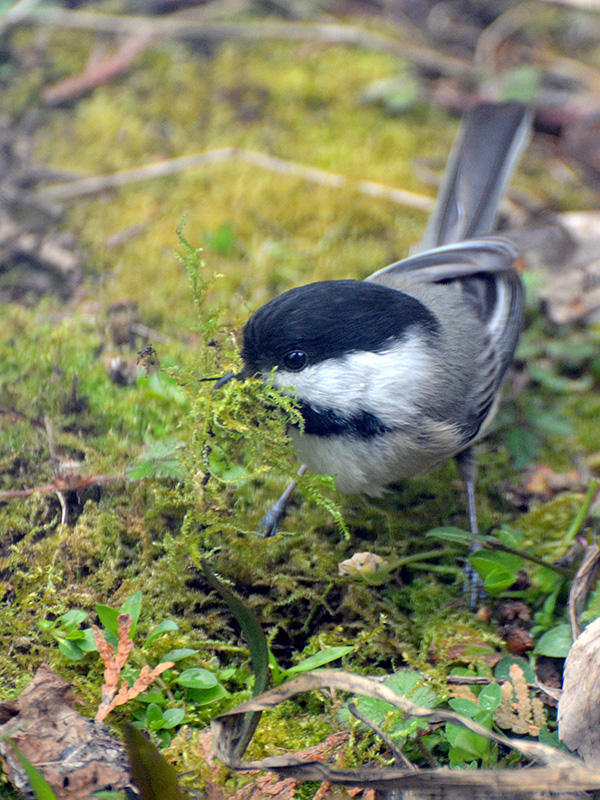
How it grows
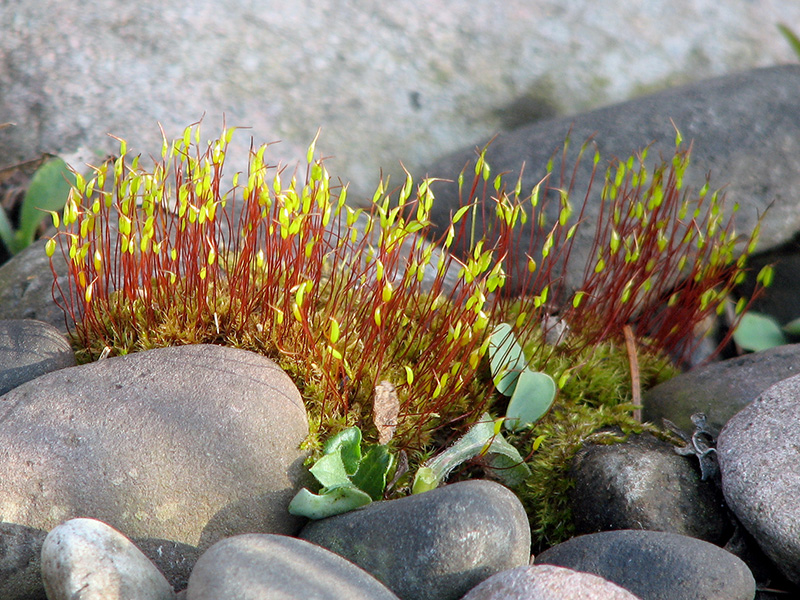
Moss has an interesting two-stage reproductive cycle consisting of gametophytes and sporophytes.
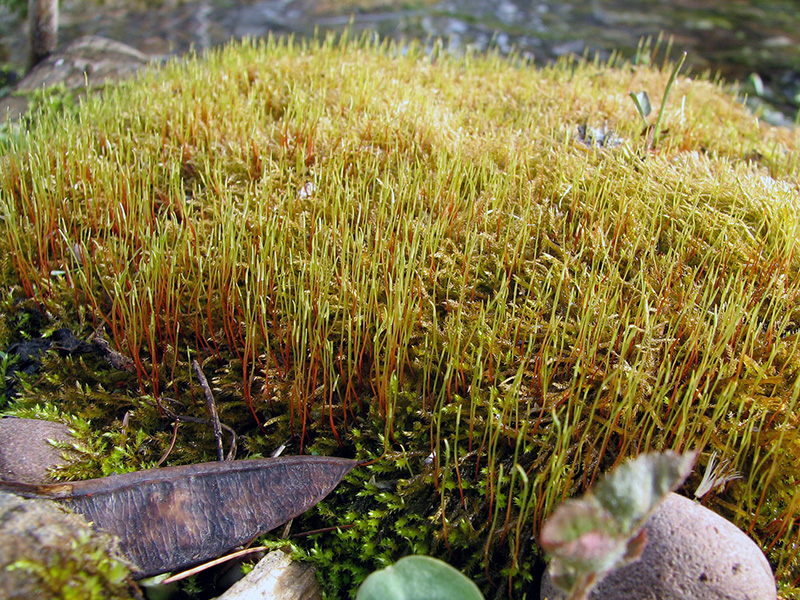
Moss in one reproductive stage.
*** IMPORTANT ***
Moss products sold for crafts, horticulture, interior decoration etc. are generally obtained by harvesting from forests without regard to the consequences to the forest ecosystem!
Wholesale collection of wild mosses raises concern for the moss itself, as well as the many plants and animals that depend on these colonies for shelter.
~ William Cullina, Native Ferns, Moss & Grasses, p. 101
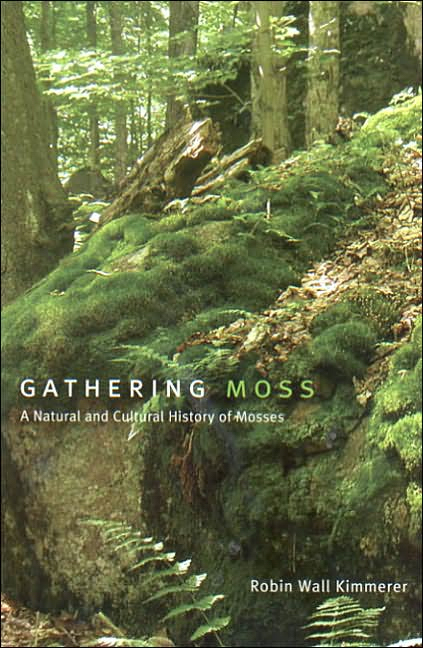
Moss harvesters are in a sense removing “old-growth” mosses, which cannot replace themselves nearly as quickly as they are removed. This is, by definition, unsustainable harvest. Their loss will have consequences we cannot foresee. When the mosses are taken, their web of interactions goes along with them. Birds, rivers, and salamanders will miss them.
~ Robin Kimmerer, Gathering Moss: A Natural and Cultural History of Mosses, p. 155
Resources
- Book:
- Gathering Moss by Robin Kimmerer, a local SUNY-ESF professor, is an award-winning book about the biology, cultural history, and ecology of moss.
- Re Soil Foundation:
- Ecological Landscaping Alliance:
- NY Times: (If you aren’t a NYT subscriber you may have to google the article title)
- Moss Hunters Roll Away Nature’s Carpet, and Some Ecologists Worry – features SUNY-ESF’s Robin Kimmerer
- Northern Forest Atlas:
- Mosses of the Northern forests – a downloadable guide
- Phys.org:
Videos
- SUNY-ESF:
- General:
Reflections
Field studies reveal that carbon sequestration, nutrient cycling, organic matter decomposition and soil-borne plant pathogen control are greater in soils beneath mosses than in unvegetated soils. Based on these studies, modelling shows the likely extent of soil moss cover and underlines its value to the planet.
~ Nature.com, Soil mosses provide critical ecosystem services across the globe
Some of the most underappreciated plants, mosses provide incredible habitat. Birds pluck them to line their nests, and fireflies lay eggs on them and pupate beneath them.
~ Nancy Lawson, The Humane Gardener
Mosses are everywhere, once you start looking, and the easiest approach is to encourage and enhance what you already have, rather than buying or collecting moss from other places.
~ William Cullina, Native Ferns, Moss & Grasses, p. 97
To gaze close up at a pillow of moss is to be transported to a Lilliputian world where tiny bryophytes (mosses and liverworts) mingle with ants, mushrooms, and all the minuscule things that go busily along turning the cast-offs of life into compost and gas.
~ William Cullina, Native Ferns, Moss & Grasses, p. 93
We found that soil mosses are associated with greater carbon sequestration, pool sizes for key nutrients and organic matter decomposition rates but a lower proportion of soil-borne plant pathogens than unvegetated soils. Mosses are especially important for supporting multiple ecosystem services where vascular-plant cover is low. Globally, soil mosses potentially support 6.43 Gt more carbon in the soil layer than do bare soils. The amount of soil carbon associated with mosses is up to six times the annual global carbon emissions from any altered land use globally. The largest positive contribution of mosses to soils occurs under perennial, mat and turf mosses, in less-productive ecosystems and on sandy soils. Our results highlight the contribution of mosses to soil life and functions and the need to conserve these important organisms to support healthy soils.
~ David Eldridge et al., Nature.com The global contribution of soil mosses to ecosystem services
